With a plethora of scenic trails, Colorado’s leading park entices every outdoor adventurer. But don’t feel disheartened if long walks up the mountainside are not your cup of tea. Rocky Mountain National Park has more than enough shorter hikes, trails that range from less than a mile to 3 miles one way.
Last updated: April 6, 2025
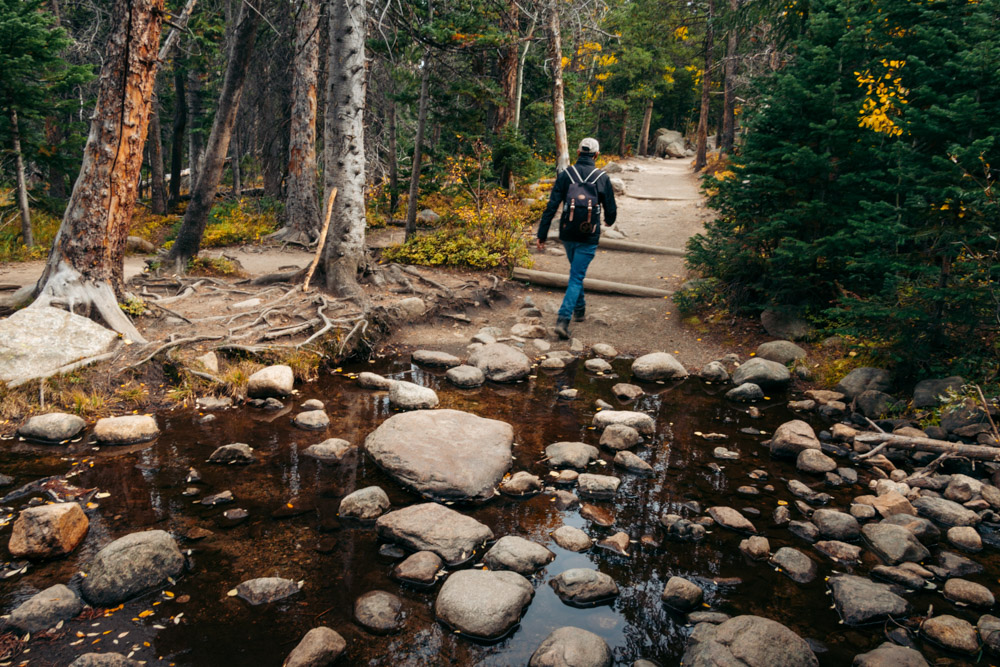
Top 9 Hikes in Rocky Mountain National Park: Loop Trails and Hiking Tracks under 3 Miles
The most famous member of Colorado’s national park’s family, Rocky Mountain National Park lives up to its fame. The 415-square-mile area spans the Continental Divide and encompasses such diverse landscapes as mountainous wilderness, forests, alpine lakes, and even tundra.
Each of these realms is unique, from vegetation it nurtures to wild animals drawn to specific food sources. And most of these impeccable sites of Rocky Mountain National Park can be reached via an extended web of hiking trails, both challenging and easy.
The natural beauty of the mountains is intensified by cottonwood, maple, and aspen trees that transform into golden groves in mid-fall. In summer and late spring, these green beauties offer a welcoming shelter for hikers tracking through the forest to an alpine lake or a cascading waterfall.
And Yet Many Hikes in Rocky Mountain Are Not Easy…
Despite all its natural splendor, Rocky Mountain National Park may be a challenging area to hike through. Known as one of the highest national parks in the country, the region is dotted with trails with a significant change of elevation, even over short distances.
Furthermore, Rocky Mountain National Park, still longing for solitude and tranquility, hardly ever pampers the hikers with predictable weather. Hot summer days can burden nature lovers hiking in Colorado’s alpine tundra with merciless sun and gusty winds. In fall, Rocky Mountain National Park can shower the hikers with sun, rain, and snow, all in one day.
Hiking in this mountainous area can be an uncertain activity indeed. Short trails that you can squeeze in between rainy sessions come in handy. And Rocky Mountain has more than enough of these, some trails less than a mile, many others no longer than 3 miles one way.
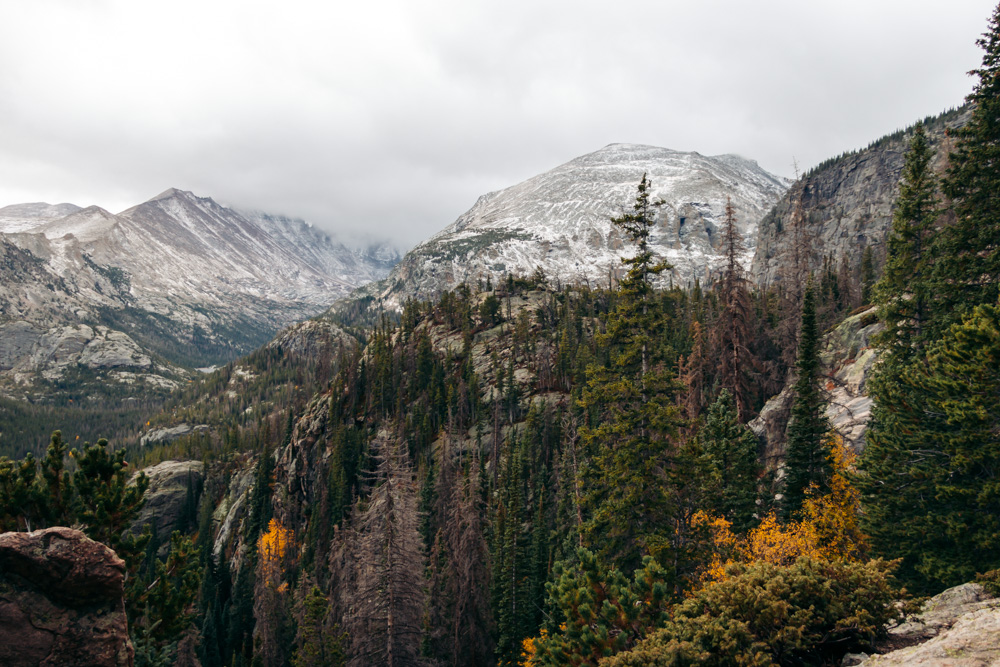
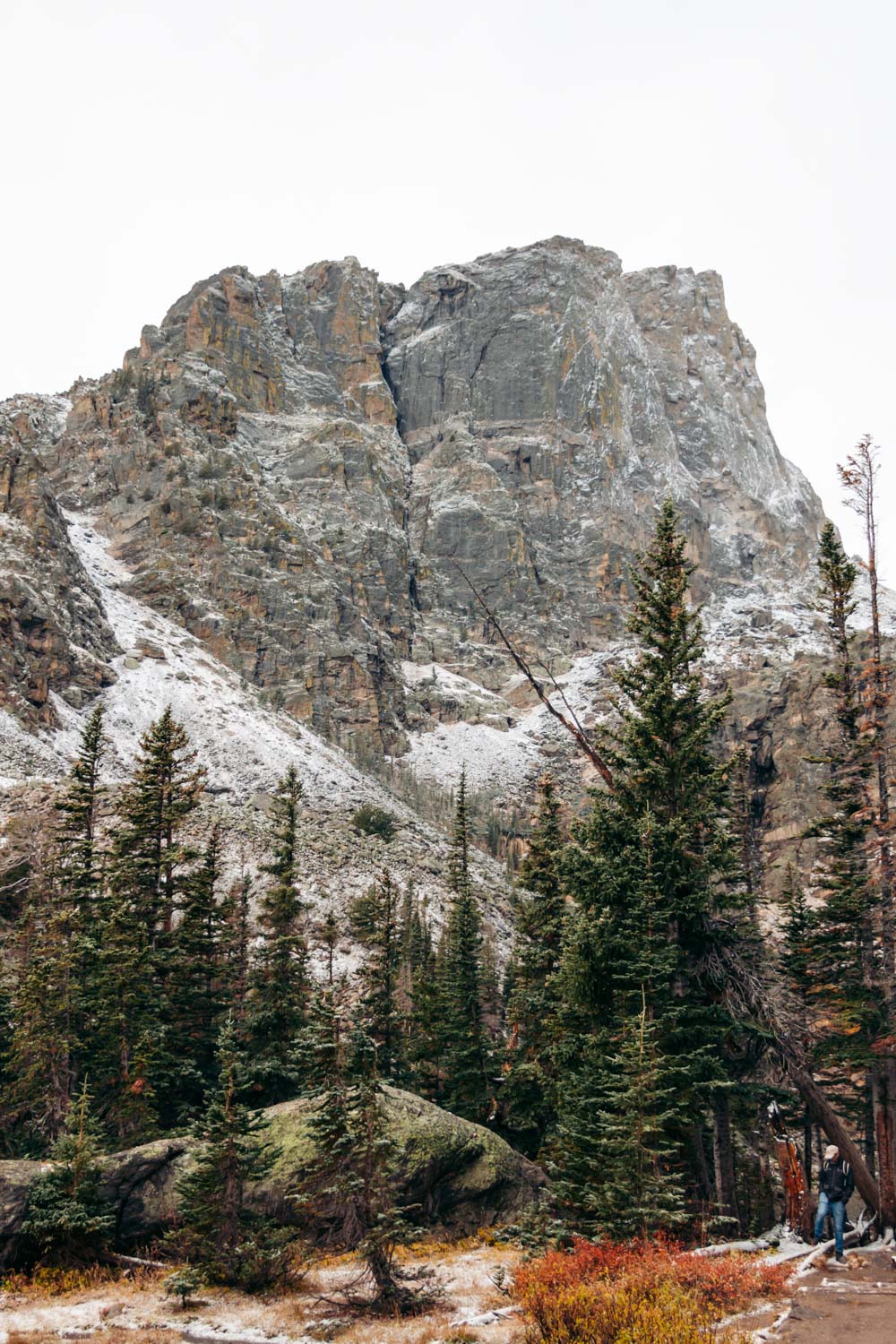
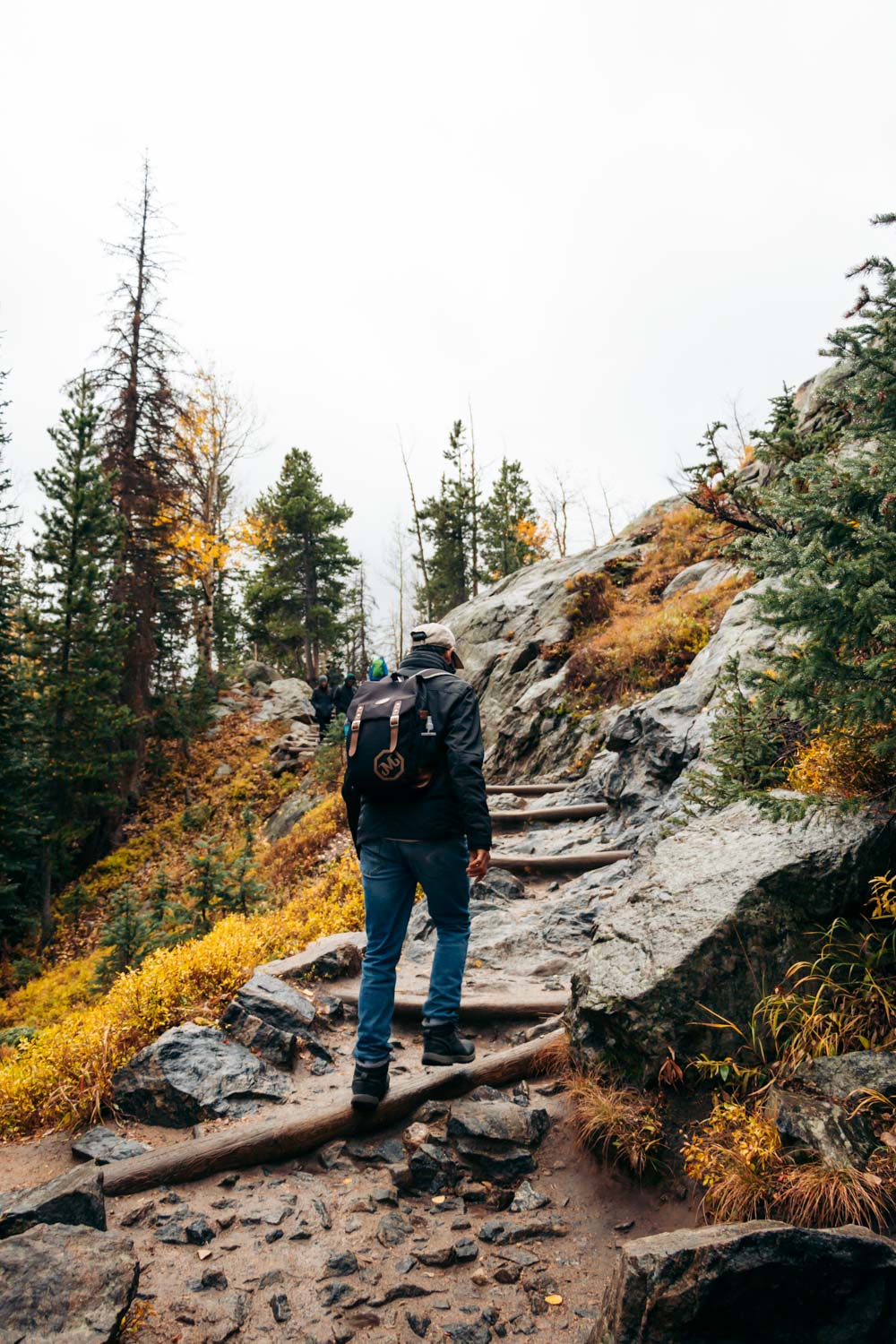
Seasonal Hikes in Rocky Mountain
A couple of trails along Trail Ridge Road that we’ve outlined in this guide to the best hikes in Rocky Mountain National Park are seasonal, though. These tracks are normally open from the end of May through the first weekend of October. No responsible and cautious hikers want to enter this harsh realm of Rocky Mountain during other times.
But let’s focus on the 9 specific trails that offer spectacular scenery and endurable conditions over short distances that most hikers of Rocky Mountain National Park can deal with. Since we had only a few days to spend in Colorado, we chose the hikes short enough to fit several of them in one day, but long enough to see Rocky Mountain beyond its most popular destinations.
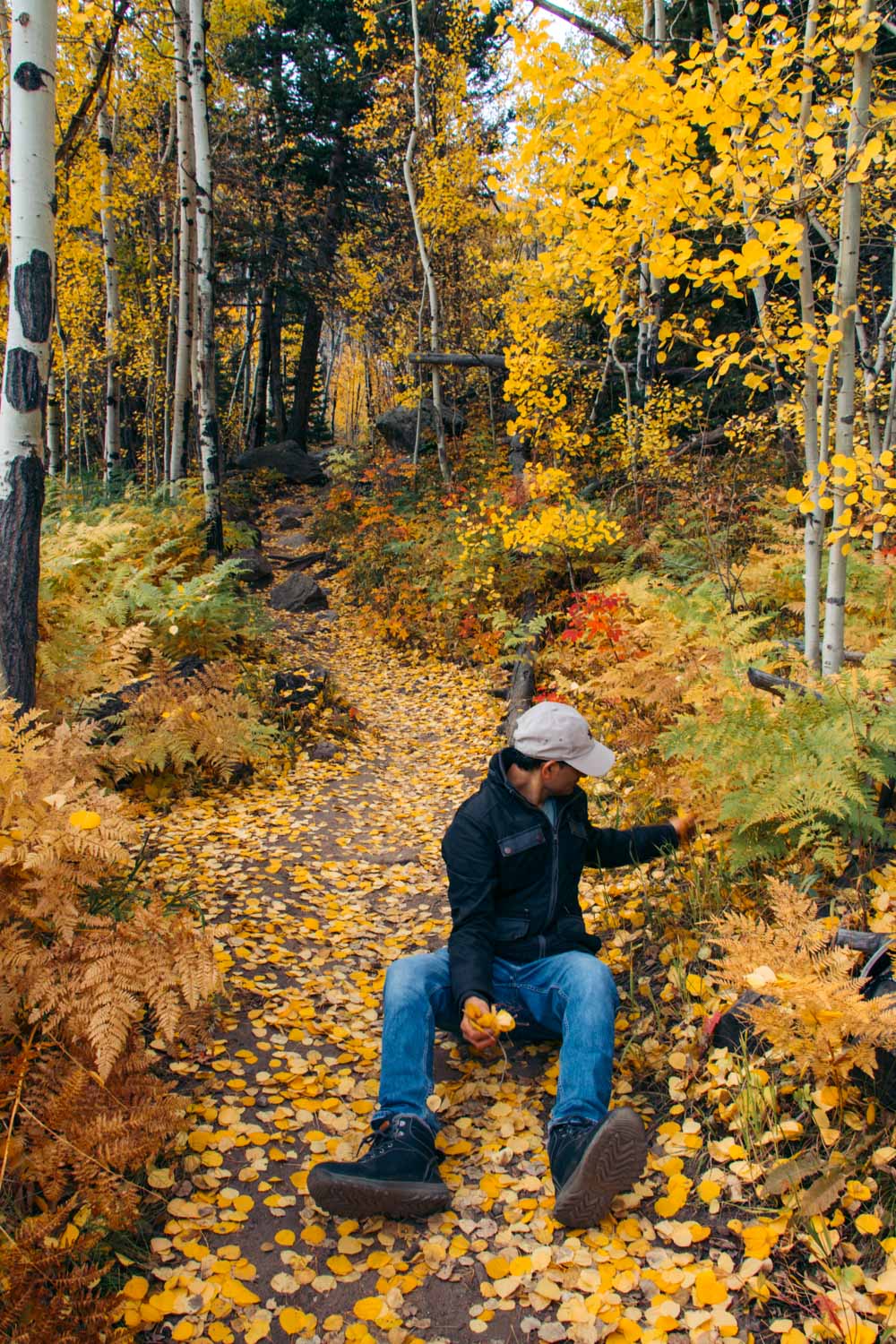
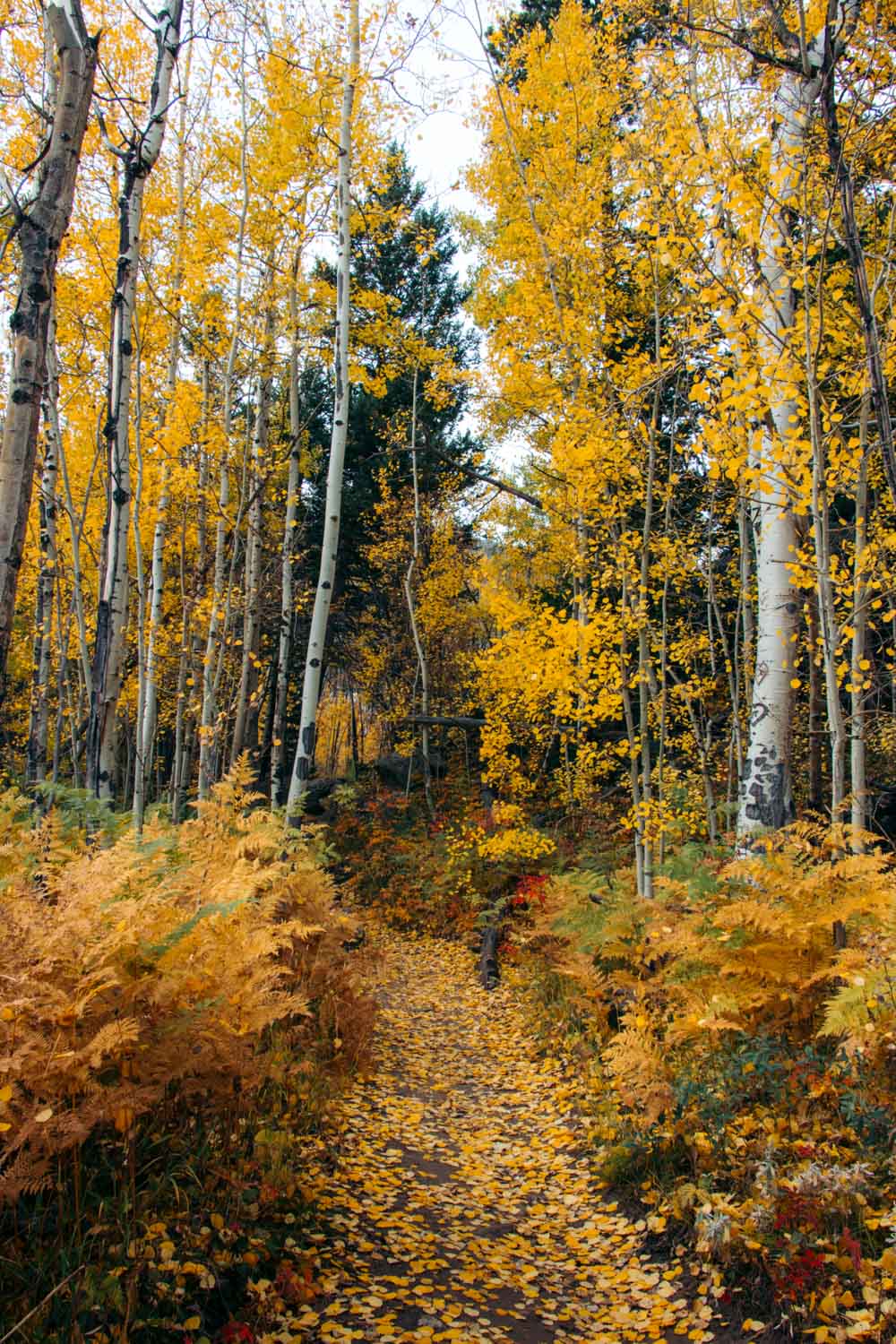
The 9 Must-Do Hikes in Rocky Mountain National Park, Colorado: Trails under 3 Miles One Way
1. Cub Lake Trail
The Cub Lake area is a unique place to hike for many reasons. First, it’s a straight (with several turns and ups and downs) path to subalpine Cub Lake. The lake sits at the end of the 2.3-mile trail and sees fewer visitors than its lower elevation relatives.
A few years ago, the area around the lake caught on fire. Most of the trees were burned down. Dead tree trunks and branches at the end of the hike still attest to the devastating fire that left a lasting impact on Rocky Mountain National Park. It will take years for new trees to grow and adorn the lake with their lush crowns.
And although the final destination of this trail doesn’t live up to your expectations of the scenic hikes in Rocky Mountain, the path itself is well worth the effort. The trail starts at the Cub Lake Trailhead in Moraine Park. From mid-September through mid-October, a gang of elk congregates in the meadows nearby, oblivious to hikers and spectators watching the wild animals from Fern Lake Road.
Reasons to Hike the Cub Lake Trail
Some elk split from the group and look for greener grass along the Cub Lake Trail. At this point and if you’re lucky enough to hike in this part of Rocky Mountain when the elk breed, you are the one who needs to detour and look for a side trail to walk around. The elk are wild animals. You must keep a safe distance at all times.
Another reason to add the Cub Lake Trail to your Rocky Mountain National Park hikes is an aspen grove, nestled further up the mountainside. The trees look vibrant in late spring and summer. In fall, though, they invigorate the area with their rich yellow and red colors. Even if you turn back to the trailhead after this point, consider your first hike in Rocky Mountain National Park successful.
- Distance: 2.3-mile, one-way (4.6-mile, round-trip) hike
- Difficulty: Moderate
- Time: 2-3 hours
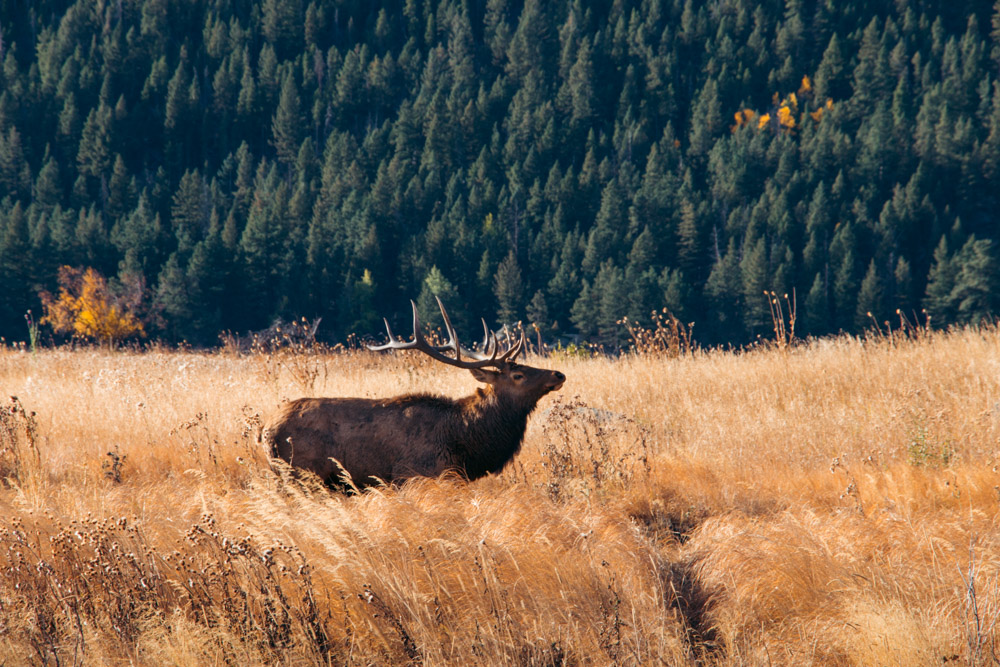
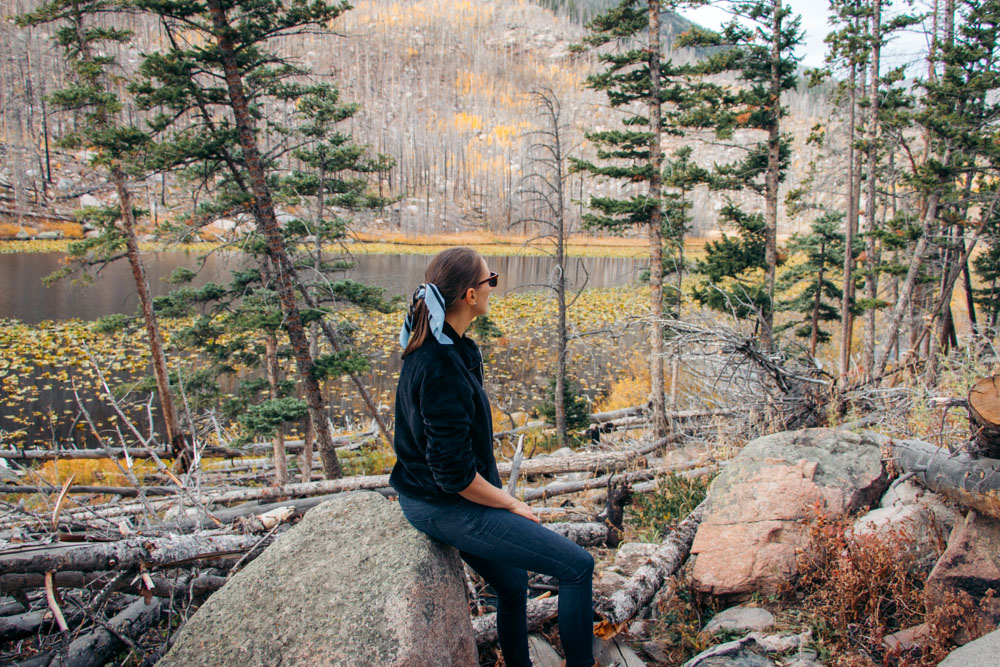
2. Bear Lake Trail
One of the most popular hikes in Rocky Mountain National Park, the Bear Lake Trail is a pleasant walk around the lake. The well-trodden path with plenty of benches and vantage points along the shore is short, virtually flat, and easily accessible. For all ladies out there, you can even hike the Bear Lake Trail in a dress.
Bear Lake is located along the Bear Lake Corridor. Many of the scenic hikes under 3 miles (including some that we’ve included in this Rocky Mountain guide) start here.
The lake itself got its name from a large population of grizzly and black bears that used to frequent the area. Hardly any bears venture to the Bear Lake shores nowadays. In fact, only about 30 black bears remain in Rocky Mountain National Park. And even these prefer farther, more secluded corners of the park.
- Distance: 0.6-mile loop trail
- Difficulty: Easy
- Time: 15 minutes
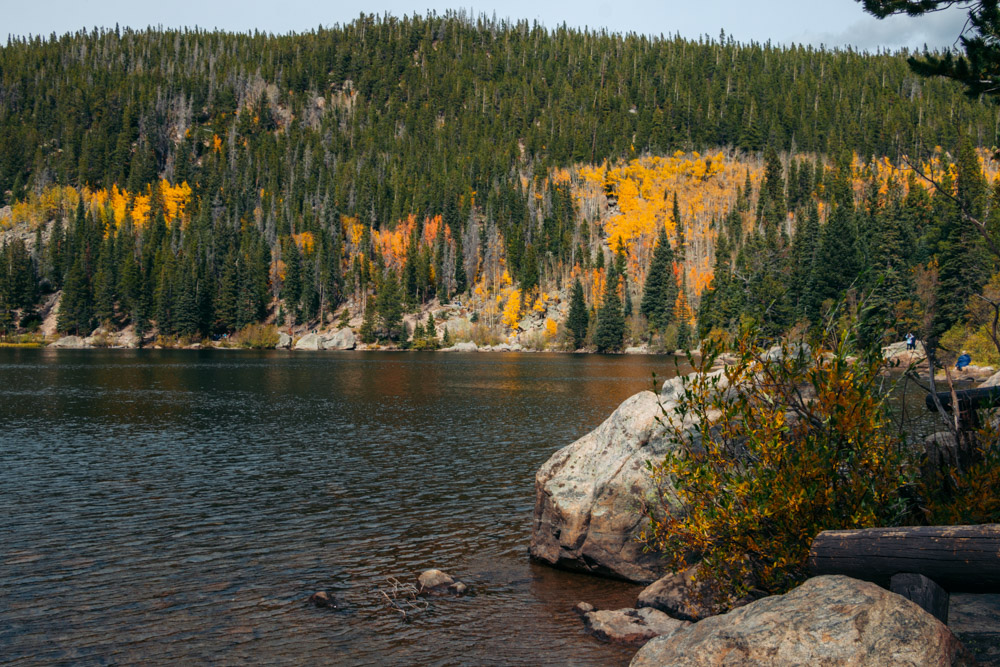
3. Alberta Falls Trail
From Bear Lake head back to the trail junction and hike to the left toward Alberta Falls, one of the most visited waterfalls in Rocky Mountain National Park. Running down the hill, the trail has an easy start. This section, however, becomes the most challenging once you hike back to the Bear Lake area.
On top of that, this part of Rocky Mountain is heavily shaded, which makes summer hikes quite enjoyable. In fall, you’ll find another golden aspen grove to hike through at a slower pace to allow enough time to take in the hues and sounds of the iconic Rocky Mountains.
Alberta Falls marks the end of this hike. The 30-foot cascading waterfall drops from a cliff and splashes along many rocks down into Glacier Creek that empties into Bear Lake.
TIP: Don’t rush to get back on the trail. Sit on the rocks near the waterfall and enjoy the panoramic views of the mountains towering in the distance. Or, if you prefer the nearest sights, watch blue-tailed Steller’s jays doing their birdie business on the boulders or in the trees growing around Alberta Falls.
Alternative Hike: You can go back the same way or continue on to the Loch, Mills Lake, or Lake Haiyaha.
- Distance: 1-mile, one-way (2-mile, round-trip) trail
- Difficulty: Easy
- Time: 1-2 hours
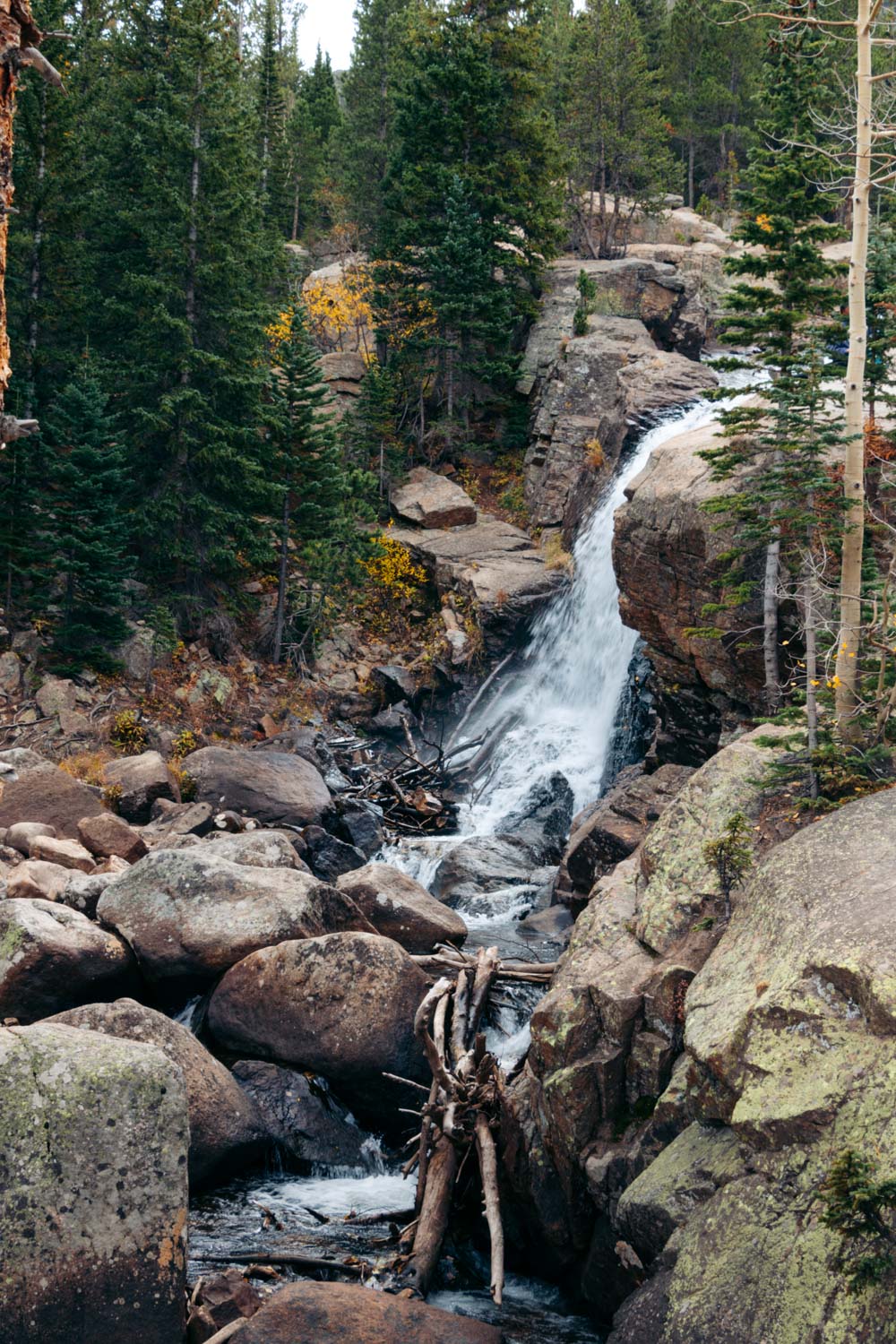
4. Forest Canyon Overlook Trail
The short, paved Forest Canyon Overlook Trail sits at 11,716 feet along Trail Ridge Road. Grasses and sedges and no tall trees cover the ground of this alpine section of the park. Consequently, different wildlife graze on these plants. In the warmer months, many elk migrate to higher elevations, presenting more opportunities to view and photograph them from the trail.
But the animals aren’t even the main reason to go on this 5-minute hike in Rocky Mountain National Park. Forest Canyon and its tributary canyons, Hayden Gorge and Gorge Lakes – all are the byproducts of the erosive force of glacial ice – along with a V-shaped stream valley below draw the crowds with their intriguing forms and incredible formation history.
TIP: The seasonal trail is open only for about 5 months a year. If the weather permits, you can hike along the Forest Canyon Overlook Trail from mid- or late May through the first weekend of October.
- Distance: 0.3-mile, round-trip trail
- Difficulty: Easy
- Time: 5 minutes
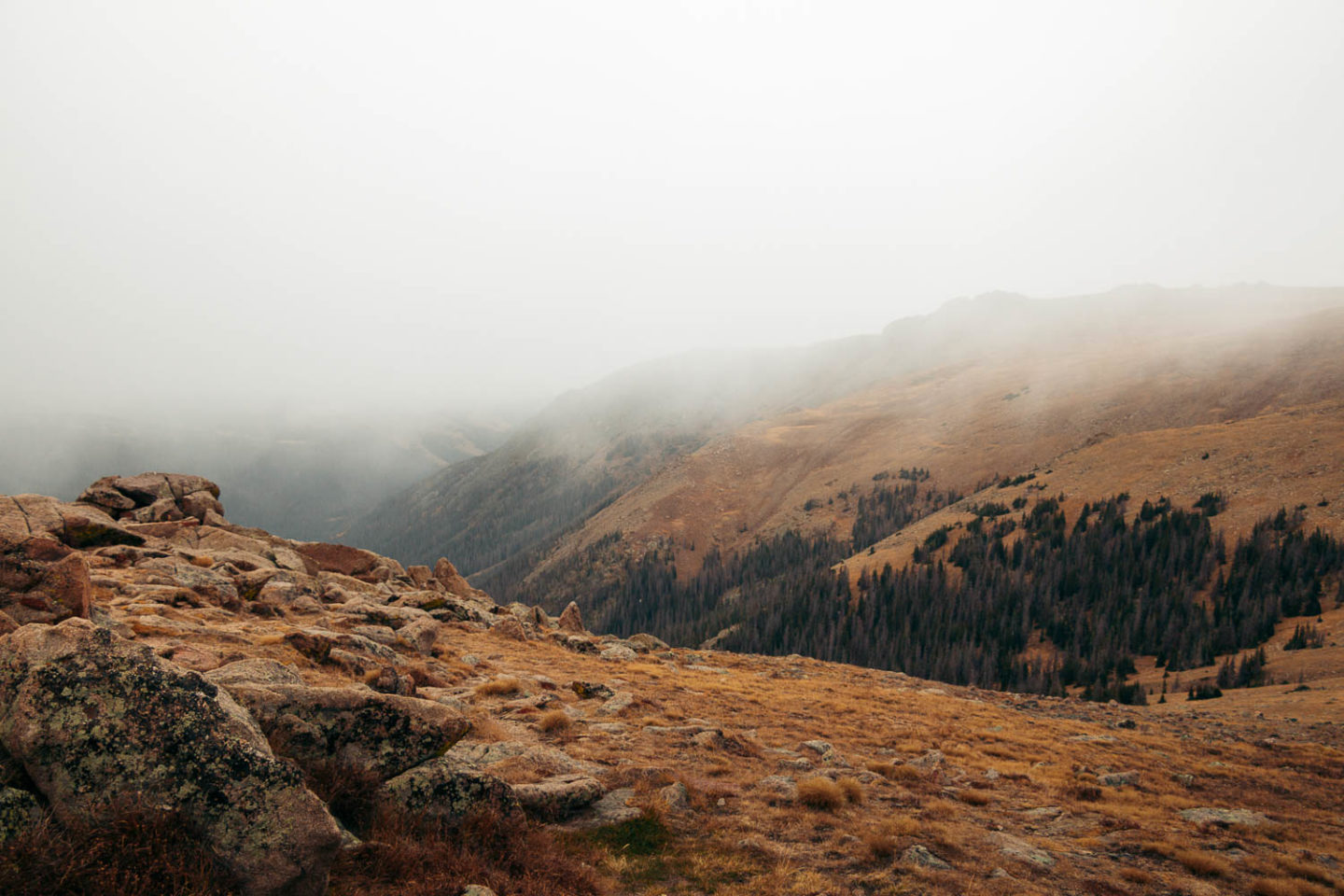
5. Tundra Communities Trail
Also nestled in the Trail Ridge Road area, the Tundra Communities Trail is an easy hike along a paved trail in the alpine terrain of Rocky Mountain. The tundra is a very fragile environment. It harbors some rare plants and shelters some native to Colorado wildlife. So, walking off the trail is highly prohibited.
In late fall when I hiked the Tundra Communities Trail, this elevated section of Rocky Mountain National Park looked barren. The area was covered with a thick, low layer of dried sedges. You could hardly recognize any plants specific to this area, let alone see any wildlife.
But unique rock formations, such as Mushroom Rocks and the Toll Memorial rocks at the end of the hike, are alway here to entice the hikers and inspire them to hit the trail in the first place.
TIP: Similar to all attractions along the highest continuous road in Rocky Mountain National Park, the Tundra Communities Trail welcomes the hikers only from mid- or late May through the mid-October. Again, it all depends on the weather.
- Distance: 1-mile, round-trip trail
- Difficulty: Easy
- Time: 20-30 minutes
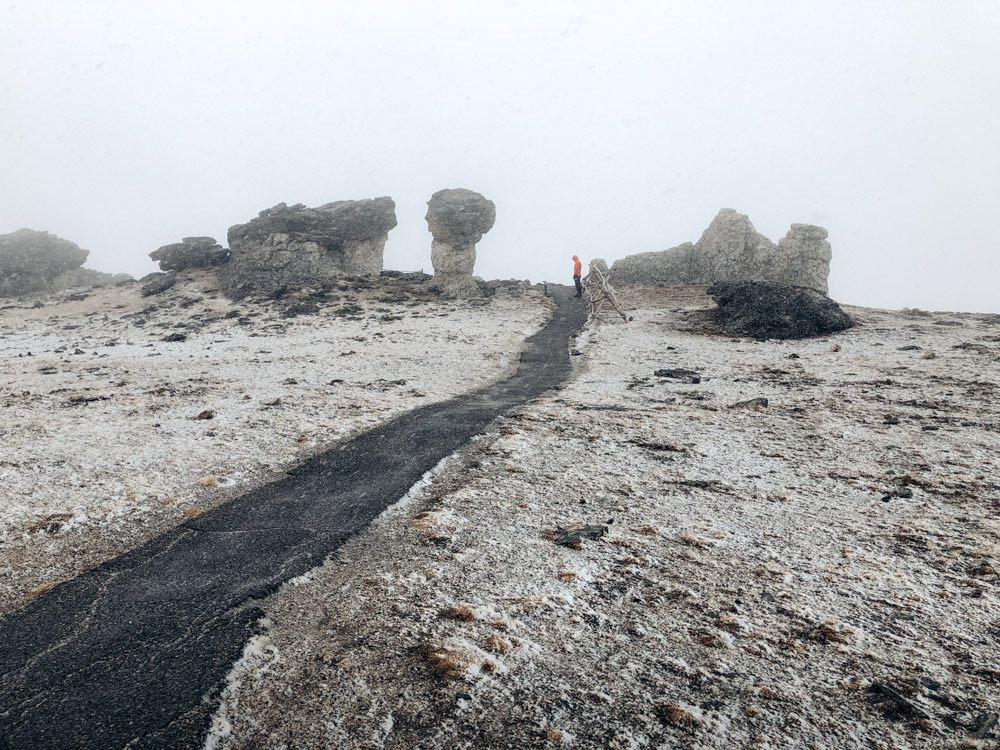
6. Nymph, Dream, and Emerald Lakes Trail
One of the most beautiful lake hikes in Rocky Mountain National Park, the Nymph, Dream, and Emerald Lakes Trail connects three alpine lakes. Each of these lakes can be a final destination where you can stop your adventure and tread back to the trailhead.
But if you can manage some change in elevation, be sure to see all three lakes. Like some of the aforementioned hikes, this scenic trail starts at one of the Rocky Mountain’s popular areas, the Bear Lake trailhead. But unlike the Alberta Falls Trail (both trails share the same trailhead), the lakes trail sprints uphill from the start. The path is wide and is still quite easy.
In about 0.5 mile you come across the first destination, Nymph Lake. Dream Lake is a short 0.6-mile hike farther up along a series of footbridges and simple stairs (you can find these in many other areas of Rocky Mountain National Park). The final stretch of the hike is another 0.6 mile. The trail ends at the shore of an emerald-colored lake.
TIP: From Emerald Lake turn back and follow the same way you came from to get to the trailhead. If the scenic trail hasn’t tired but only invigorated your adventurous spirit, turn to the right at a trail junction that sits past Nymph Lake and hike uphill toward Lake Haiyaha, one of the less visited areas in Rocky Mountain.
- Distance: 1.8-mile, one-way hike (the entire trail) (3.6-mile, round-trip trail)
- Difficulty: Moderate
- Time: 2-3 hours
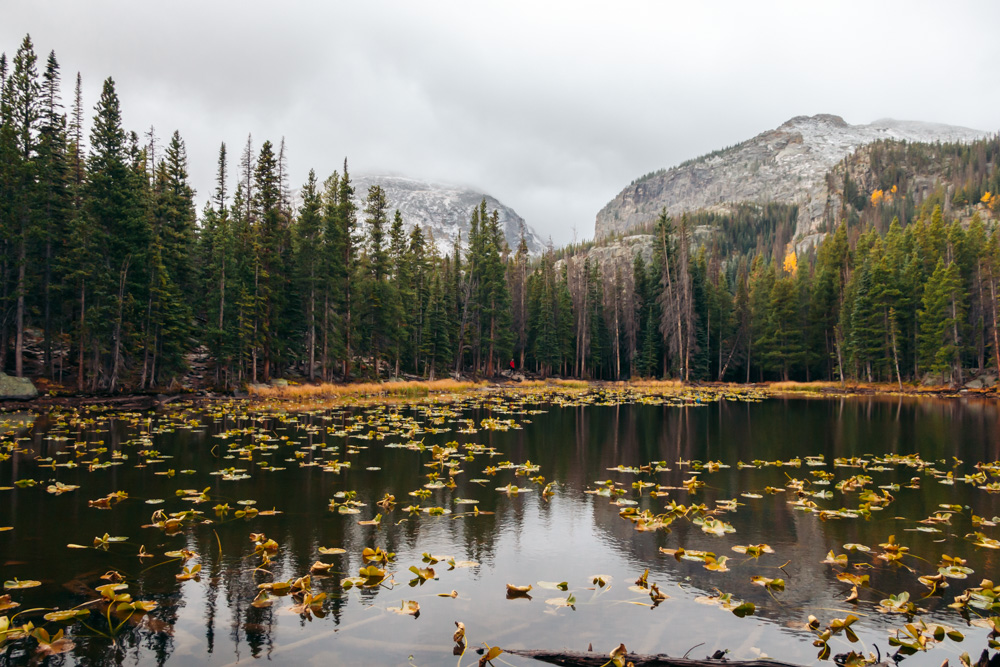
7. Lake Haiyaha Trail
The hardest part of the Lake Haiyaha Trail starts almost as soon as you pass the trail junction near Nymph Lake. A series of switchbacks forces the hikers to push forward along the cliff edge where beautiful vistas of the Rocky Mountains Glacier Basin area open up.
The trail soon levels up and dives deeper into the forest. The hike is less fascinating, but relatively easy from now on. In 20-30 minutes, depending on your speed, you reach an area with large boulders. Behind the rocks hides the coveted alpine lake with remarkable views of towering giants obscuring it.
- Distance: 2.2-mile, one-way hike (from the Bear Lake Trailhead)
- Difficulty: Moderate; strenuous in some parts
- Time: 3 hours
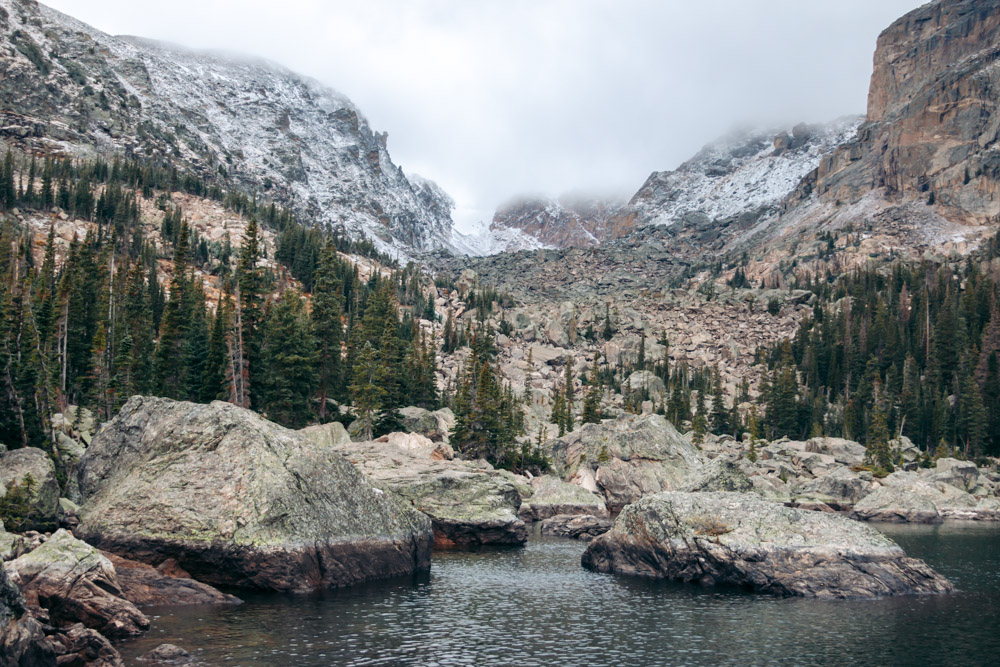
8. Bierstadt Lake Trail
No hikes show the magnitude and splendor of Rocky Mountain National Park like the Bierstadt Lake Trail does. But here comes a tricky part.
One of the most popular ways to set off on the journey to Bierstadt Lake is to hike from the Bear Lake area, a place that marks the beginning of many other incredible hikes in Rocky Mountain National Park. The trail runs through the forest until it stumbles upon the Bierstadt Lake shore.
The Bierstadt Lake Trail with the remarkable views of the distant rugged mountains and the lush basin below starts at the Bierstadt Lake Trailhead. The trailhead is located along Bear Lake Road, 3.5 miles south of the Bear Lake area.
TIP: A small roadside parking lot is present, but it fills up quickly, especially during the peak season. So start your hike early.
The trail ascends the mountainside via a series of switchbacks. This section of the hike can be challenging, but the views below make you quickly forget about all the tiredness. Walk slower here to take in all the glorious colors of the mountainside covered with the lush tree blankets.
At its final stretch, the Bierstadt Lake Trail runs into the forest and ends abruptly at the shore of Bierstadt Lake, about 0.2 mile later.
Alternative Trail: You can go back to the trailhead the same way you came from or hike to Bear Lake from here.
- Distance: 2.8-mile, round-trip hike
- Difficulty: Easy to moderate
- Time: 2 hours
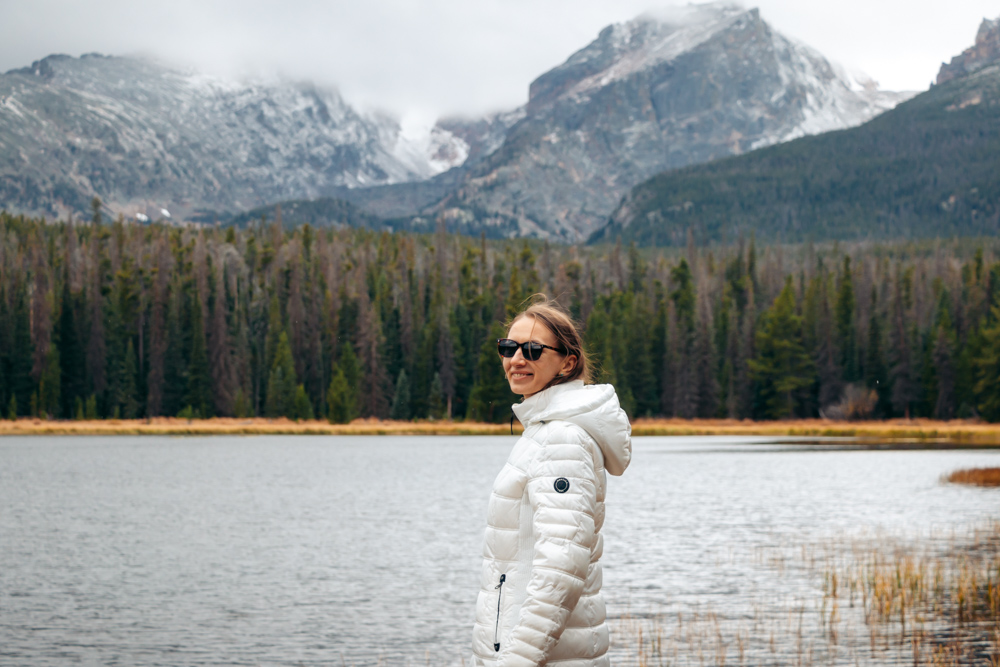
9. Sprague Lake Trail
Finish your hiking adventures in Rocky Mountain National Park on an easy and relaxing, but not less wondrous note. The 0.8-mile Sprague Lake Loop Trail snakes around Sprague Lake. The path is virtually flat and is quite popular with both hikers and photographers, including wedding photographers. So don’t be surprised to encounter a wedding party along the trail.
TIP: If you already feel like Sprague Lake might not fascinate you enough, then let me dare you to hang here for a little bit longer. Yes, this Rocky Mountain hike can be busy. But occasional moose can still enjoy peace and serenity while stopping at the lake to quench their thirst at dawn or dusk. So follow their lead if the crowds make you uncomfortable.
Finally, the views of Hallett Peak, Flattop Mountain, and Otis Peak are well worth this short hike in the lower section of Rocky Mountain National Park.
- Distance: 0.8-mile loop trail
- Difficulty: Easy
- Time: 15-20 minutes
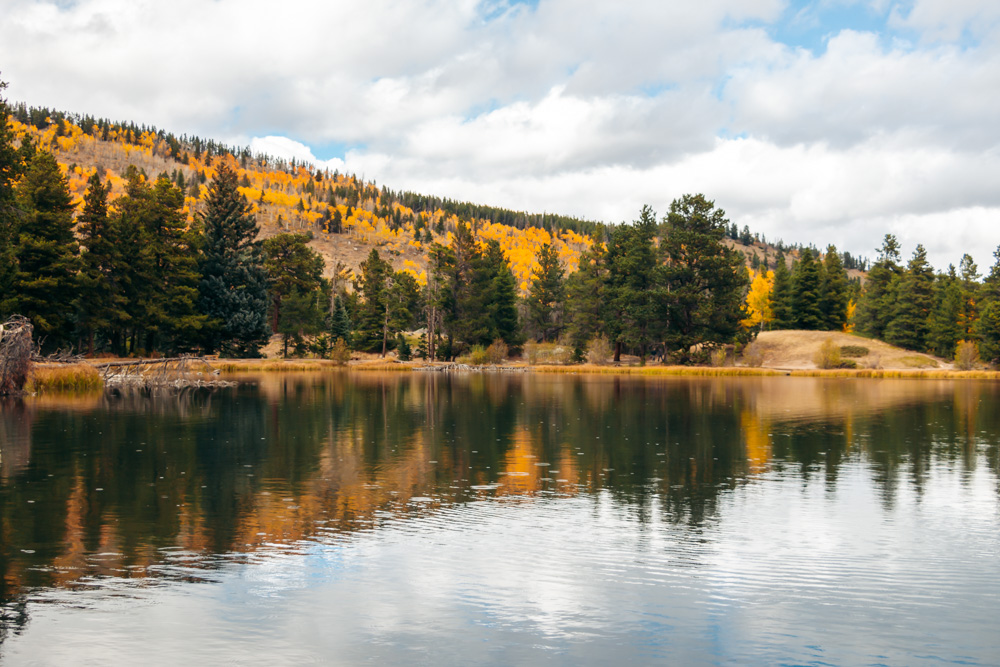
Thank you for sharing informative outdoor activities. I am attracted to Sprague Lake Trail. I look forward to seeing your next post.
Author
Thank you! I hope one day you will be able to see it in person.